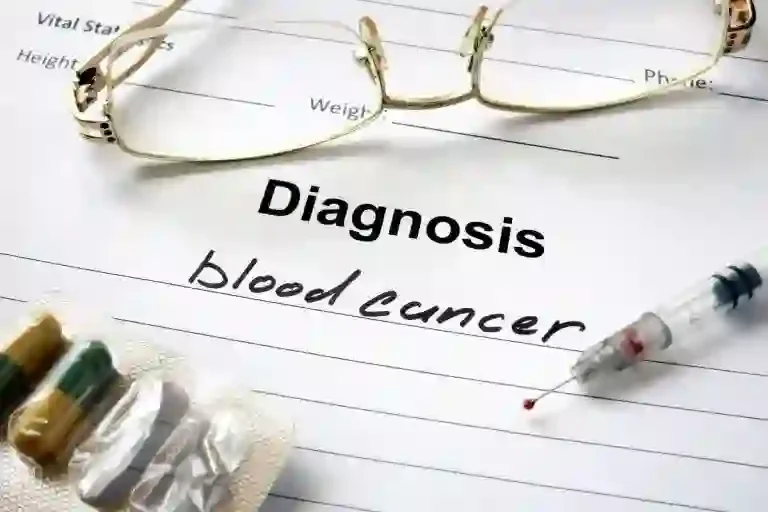Blood cancer is a type of cancer which affects how the body produces blood cells and how well those cells work. Most blood cancers begin in the bone marrow, which is the site of blood cell production. Red blood cells are responsible for carrying oxygen around the body, while white blood cells and platelets fight off infections and control bleeding. Blood cancer can result in abnormal production of one of these blood cells, leading to various medical conditions.
Blood cancer often occurs as a result of mutation in these blood cells, resulting in abnormal behaviour of these cells. Most often, what triggers such changes are not under the control of the patient or others. Blood cancer is not a hereditary disease, which means that it develops during the lifetime of a person and does not pass on to the next generation of a patient suffering from blood cancer. Children can also develop blood cancer. Symptoms and treatment of blood cancer vary between children and adults.
Diagnosis of Blood Cancer
Blood cancer diagnosis may be performed by a healthcare professional or doctor who may assess the physical symptoms and ask for the medical and family history of the patients. The doctor may order some blood tests as well as some imaging tests. The type of blood test may depend upon the type of blood cancer suspected.
The various tests used to diagnose different blood cancers include the following:
- Complete blood count (CBC) test: This test provides a quantitative assessment of the blood cells in a sample of blood. From this test, the different amounts of blood cells are compared against the standard amounts to look for signs of blood cell count abnormalities.
- Blood chemistry test: This test is used to measure the different chemicals and other substances in the blood, which may give an idea about the condition of the patient.
- Computed tomography (CT) scan: A CT scan may be recommended to scan the soft tissues and bones of the bone marrow, which may provide an image of bone damage.
- Magnetic Resonance Imaging (MRI) scan: This test may help to look for signs of complications of leukaemia or lymphoma affecting the spine.
- Positron Emission Tomography (PET) scan: A PET scan may help to look for signs of myeloma by producing images of the organs and tissues.
- Bone marrow biopsy: A bone marrow biopsy may help to analyse the percentage of normal and abnormal cells in the bone marrow.
- Blood cell examination: Blood cells may be tested under the microscope to look for structural deformities or changes, which can help to look for signs of leukaemia or lymphoma.
Treatment & Management of Blood Cancer
Blood cancer treatment may not yield the same results for everyone. Some factors such as age, overall health condition, and specific treatment side-effects also need to be considered before considering any form of blood cancer treatment. A team of doctors discuss the appropriate treatment plan with the patient after a thorough evaluation of all factors that may interfere with the treatment.
Some of the common blood cancer treatments available include the following:
- Chemotherapy
Chemotherapy is one of the most effective blood cancer treatments, which uses certain drugs to destroy the cancer-causing cells. Sometimes, chemotherapy may be applied along with a stem cell transplant to maximise the benefit of both treatments.
- Radiation therapy
Radiation therapy is beneficial for patients with lymphoma. This treatment procedure uses specific high energy beams such as X-rays, protons, or other energy beams to destroy the cancerous cells.
- Immunotherapy
Immunotherapy aims to fortify the patient’s own immune system to target and fight off the cancer cells by destroying them or slowing down their growth.
- CAR T-cell therapy
CAR T-cell therapy is a form of immunotherapy, which harnesses the power of T-cell lymphocytes of the patient and turns it into an effective blood cancer treatment method. This treatment can be used to treat acute B-cell lymphoblastic leukaemia, multiple myeloma and a number of non-Hodgkin’s lymphomas in case other forms of blood cancer treatments have failed to work.
- Targeted therapy
This is an innovative blood cancer treatment procedure that targets genetic changes or mutations in the cancerous cells and destroys them so that they cannot turn normal, healthy cells into abnormal cells.
- Stem cell (bone marrow) transplant
When the stem cells of the patient get destroyed by cancer, they can be replaced by using new healthy stem cells either from the patient themselves or from a donor. This blood cancer surgery is another one of the most effective blood cancer treatments wherein the healthy stem cells are utilised to replace the cancer affected cells of the bone marrow. This provides the best recovery outlook for patients. Bone marrow transplant can be done in two ways:
- Allogeneic– A healthy donor provides the stem cells for bone marrow transplant.
- Autologous– The patient’s own stem cells are utilised for this procedure.
Conclusion
The primary goal of blood cancer treatment is to cure the problem. If it cannot be cured, there are many ways that Oncologists may employ to achieve remission, that is, eliminating the signs and symptoms of cancer. Not everyone requires treatment for blood cancer and sometimes some patients may need to wait before treatment can be proceeded with as their cancer may be slow-growing.
The best way to cure cancer is to detect it early. Get a one-on-one consultation with the top Oncologists of India at Wockhardt Hospitals, the best blood cancer hospital in India where you can avail advanced, state-of-the-art facilities for blood cancer treatment in India with utmost expertise and compassion. Book your appointment today and get a quote for blood cancer treatment cost in India.
FAQs on Blood Cancer Treatment in India
Q. What is Leukaemia?
It is the most common blood cancer affecting the white blood cells or leukocytes. Both children and adults are affected by leukaemia. Leukaemia can be of different types, which include:
- Acute lymphoblastic leukaemia,
- Acute myeloid leukaemia,
- Chronic lymphocytic leukaemia
- Chronic myelogenous leukaemia
Q. What is Lymphoma?
- Hodgkin lymphoma
- Non-hodgkin lymphoma
- Waldenstrom macroglobulinemia
- B-cell lymphoma
- T-cell lymphoma
- Follicular lymphoma












